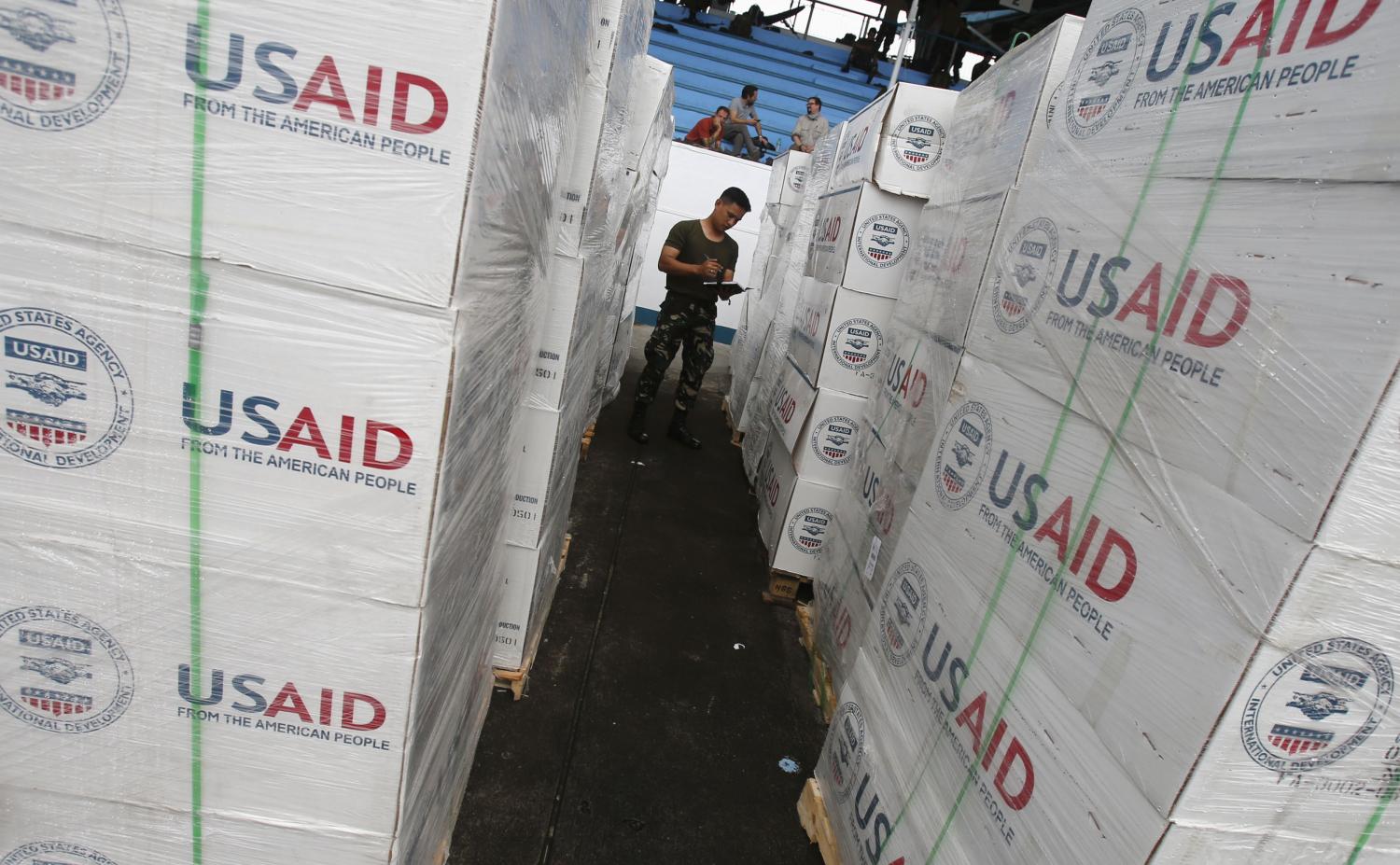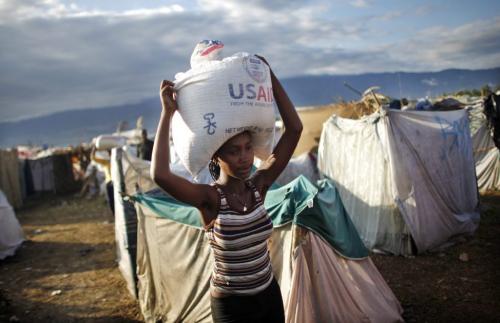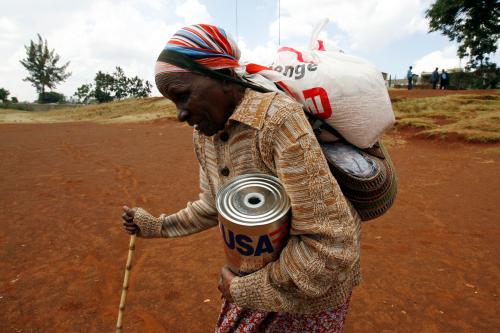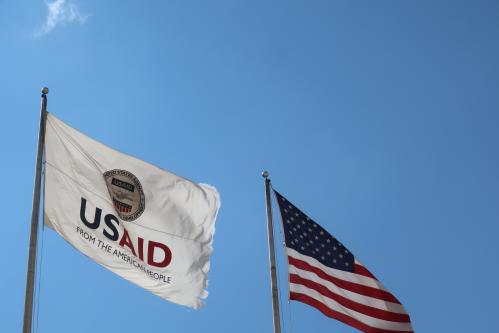The following brief is part of Brookings Big Ideas for America–an institution-wide initiative in which Brookings scholars have identified the biggest issues facing the country and provide ideas for how to address them. (Updated January 27, 2017)
 Foreign assistance and development are in the country’s security, economic, and humanitarian interests. Countries that enjoy economic progress and political and social stability are better able to create jobs, educate their citizens, have health systems that keep their populations healthy and control potential pandemics, are invested in a stable international system, and rarely are breeding grounds for terrorism. Prosperous countries are strong partners for U.S. trade and investment. Foreign aid to the neediest fulfills our humanitarian values.
Foreign assistance and development are in the country’s security, economic, and humanitarian interests. Countries that enjoy economic progress and political and social stability are better able to create jobs, educate their citizens, have health systems that keep their populations healthy and control potential pandemics, are invested in a stable international system, and rarely are breeding grounds for terrorism. Prosperous countries are strong partners for U.S. trade and investment. Foreign aid to the neediest fulfills our humanitarian values.
For those who grew up during the Cold War, the principal global challenges were few and clear—the threat of communism, inter-state and nuclear war, poverty in developing countries—with a few powerful countries shaping the agenda. Today, the global agenda has exploded to, among others challenges, ill-defined internal and regional strife, international trafficking and terrorism, climate change, the impact of the technological revolution, terrorism, tax avoidance and illicit payments, and global pandemics. The players are no longer just a few powerful states, but multiple countries with a wide range of capacities and interests as well as a host of non-state actors the mix of which changes with each issue. The relevant responses sometimes involve the traditional tools of military power, but more often require the deployment of smart tools of development and diplomacy that draw from an array of national economic, social, cultural, and political assets.
The most current example of the successful deployment of smart powers that joins development and security assistance toward a common objective is the decade-long investment in Colombia that has recently culminated in a peace accord between the government and the Revolutionary Armed Forces of Colombia (FARC).
The Development Pillar
U.S. development capabilities, consolidated and strengthened with the passage of the Foreign Assistance Act of 1961 and the creation of USAID by President Kennedy, were eroded and dispersed during the 1990s and early 2000s. This led to under-appreciation of the critical role of development to U.S. interests around the world and to U.S. policies not being properly informed about how development cooperation could advance those interests. That course has been reset over the past decade with a rebuilding of USAID, restoring its policy and budget functions, hiring additional staff with specialized skills, and ensuring it is the lead agency on most development matters. An effort is underway to modernize the agency’s operations through transparency, greater use of data for decision-making, more robust monitoring and evaluation, and focusing on results and local ownership priorities. As a result, a solid basis now exists from which the next U.S. administration can significantly advance U.S. development capacity so that it is a strong pillar of the three Ds.
Budget
A major disconnect in United States development programs is resources. The U.S. is either the most or least generous aid donor, depending on your perspective. To look just at the amount of official development assistance (ODA)1, the U.S. provides more ODA than any other country. As reported by the OECD Development Assistance Committee (DAC), U.S. ODA totaled $31.1 billion in FY 2015, with the U.K. next at $18.7 billion2. Additionally in FY 2015 the U.S. provided over $12 billion in security and military assistance. Beyond the government, in 2013 private American voluntary international giving totaled $39 billion, almost 70 percent of an estimated global total3.

On the other hand, given the size of our economy, the U.S. government can be viewed as one of the least generous development donors. Six countries surpass the global target of donor nations providing ODA of .7 percent of GNI (gross national income), led in 2015 by Sweden at 1.4 percent and Norway at 1.05 percent. In contrast, the United States trailed near the bottom at 0.17 percent, in company with the least economically advanced members of the DAC. This is in sharp contrast to the role the U.S. played in the Marshall Plan in the immediate postwar period, when assistance was 3 percent of U.S. GDP4.
The American people think the U.S. is more generous than it actually is. Polls consistently show that Americans think that foreign assistance is 25 percent of the federal budget and believe it should be in the range of 10 percent. In fact, as shown in the accompanying chart, it does not reach 1 percent.

Why did the United States invest such large sums in the recovery of Europe after World War II? Americans are a generous people, but that is not the fundamental reason. The explanation is that the U.S. saw an existential threat to the world it wanted to live in—yes, individual Americans opened up their wallets to help provide relief for the starving people of Europe, but American policy-makers responded because they saw the potential of totalitarian government taking advantage of the devastation, poverty, and hunger rampant throughout the continent.
The recent decline in resources for foreign assistance has occurred at a time when the challenges confronting the U.S. internationally have surged—the pandemics of Ebola and Zika; the uncontrollable conflict in Syria; the humanitarian crisis of an historic level of 65 million refugees and displaced person; child migration from Central America; earthquakes in Haiti and Nepal; Russian aggression in the Ukraine; the reach of ISIS and international terrorism; and civil strife in South Sudan and Yemen. U.S. development institutions and the diplomatic community are being asked to address these and many more issues with declining resources—an untenable situation if the U.S. is to fulfill its responsibility to protect the American people and preserve our country’s preeminent role. We can address these problems using tools of diplomacy and development, and in a few instances by the threat or use of hard power, and curtail the potential explosion of these threats, or we can expend far greater effort and incur a terrible human cost when they spiral out of control. As our military leaders have said, fund development and diplomacy or give me more bullets!
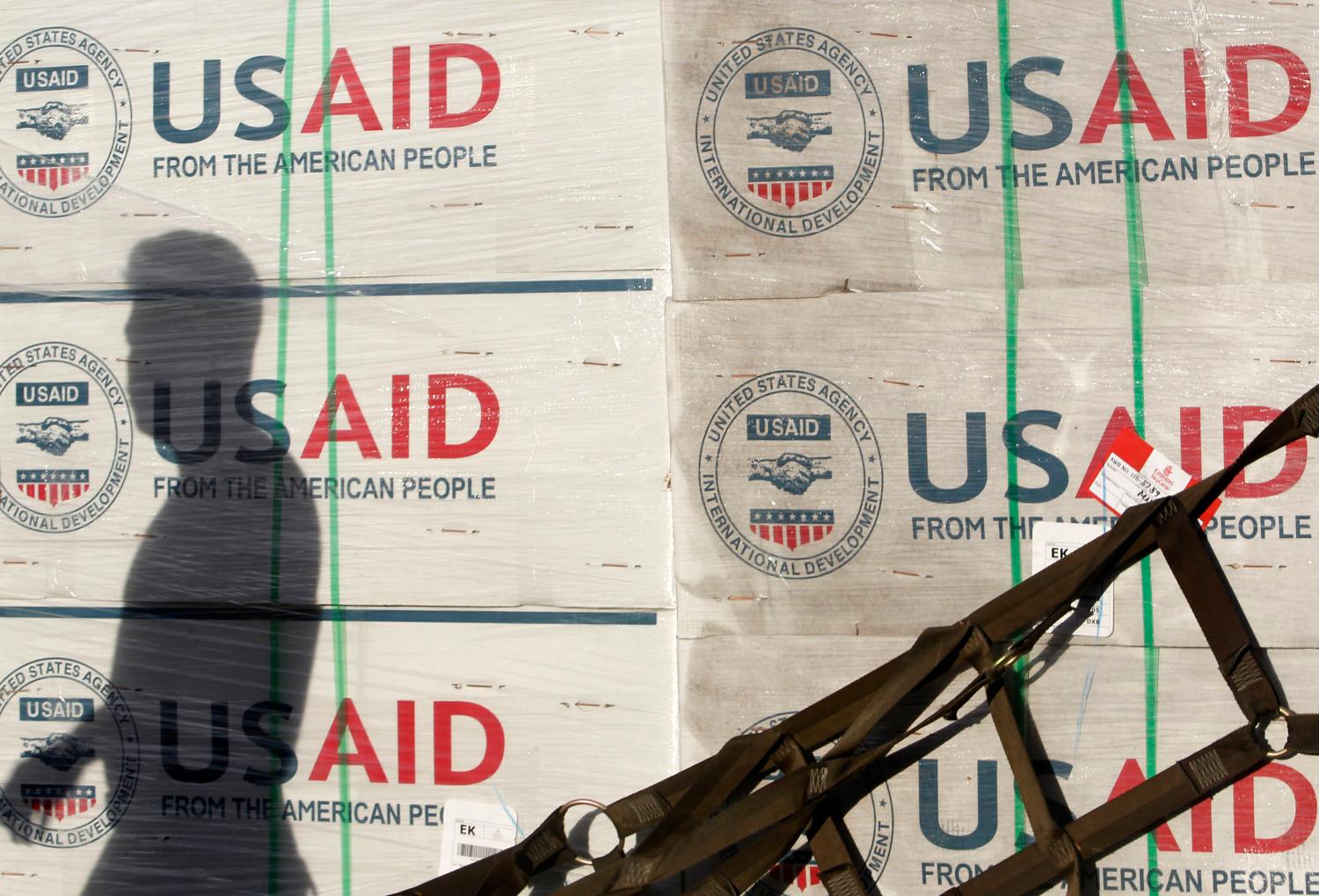
RECOMMENDATIONS
There are a range of actions that can be taken to advance the development capabilities of the U.S. government. But first and foremost are actions in three areas that would further strengthen the principal development agency, USAID; ensure that the development voice is at the policy table, and provide the necessary resources.
- STRENGTHEN USAID
Several steps would consolidate the strengthening of USAID that has occurred over the past decade.
- Cabinet Rank: Given the essential role of development in advancing the three Ds, the administrator of USAID should be conferred cabinet rank. Some presidents designated that status to the U.S. ambassador to the UN, the U.S. Trade Representative, and the head of the Small Business Administration. Just as other agencies operate in the international arena with the advice of the Secretary of State, so USAID would work in collaboration with the Department of State and under the overarching U.S. national security strategy. Cabinet status would provide the USAID administrator with the stature to be the voice for U.S. development policy, both within the administration and internationally and bring coherence to U.S. development policy. Along with this status would come a permanent seat on the National Security Council and the position of chair or vice-chair of other key development agencies—the Millennium Challenge Corporation and the Overseas Private Investment Corporation.5
- Consolidation: A key step in bringing coherence to U.S. development policy and programs is to bring into USAID other programs that are principally developmental in nature and fit USAID’s mandate:
- President’s Emergency Plan for AIDS Relief (PEPFAR): As suggested in the 2010 Quadrennial Diplomacy and Development Review (QDDR), the Global Health Initiative, the essence of which is PEPFAR, should be moved to USAID. PEPFAR is the largest single U.S. international health program. In recent years its scope has been broadened to include a focus on national health infrastructure, which makes it particularly important that it work in close harmony with USAID health programs. PEPFAR has taken impressive steps to embed data and transparency in its decision-making and to move in the direction of sustainability; bringing those capabilities into USAID would help strengthen the agency. PEPFAR has become well-respected internationally, and its brand and core operating modalities should be retained.
- Middle East Partnership Initiative (MEPI): Other programs of the Department of State that are principally developmental in nature, specifically MEPI, should be moved to USAID.
- Budget Authority: In 2010 the administration fully restored USAID’s policy function and partially restored the agency’s management of its budget. To complete that process, as was recommended in the 2010 QDDR, USAID should be given full budget authority over the programs it administers. This action would require rethinking the role of the F Bureau and the several assistance coordinators at Department of State, essentially limiting their purview to managing State’s assistance programs and coordinating with USAID and other agencies and not attempting to exercise authority over USAID programs. In addition, policy and budget should be joined in the same office to bring coherence to USAID’s programs and budget and have a single senior official responsible for ensuring the two work in tandem.
- STRATEGY
A U.S. global development strategy is an essential element to make this configuration work, as it would allow for policy coherence among the 26 U.S. government agencies involved in foreign assistance. The 2010 Presidential Policy Determination on Development demonstrated the value of a government-wide policy statement that identifies key development priorities of a new administration. Included in that policy statement was a recommendation for a global development strategy, which would be more comprehensive than a policy statement. Such a strategy should be developed through active involvement of the Congress and civil society. It would bring all agencies under a common strategy, allow the U.S. to speak with one voice internationally, and bridge the chasm between the executive branch and the Congress on key policy issues. It would also give the administrator of USAID a roadmap to direct and speak for U.S. development policy domestically and internationally.
- RESOURCES
Budgetary Resources must be brought into line with expanding international challenges.
FY 2020: No one can calculate the exact level of funding that is required to meet U.S. global development responsibilities. But given the global challenges outlined above, and looking just at development assistance, a reasonable target would be by the end of the next administration to reach at least the average level of official development assistance by DAC members—.30 percent of GNI—which for the United States would have been $54 billion for FY 2015. Reaching this target over four years would require an increase of about $5 billion a year to make U.S. programs fit to tackle the challenges of global development.
For a more in-depth discussion of ideas in this chapter, see George M. Ingram, “Aid Effectiveness: Reform in the New Administration and Congress,” Brookings. November 2016.
-
Footnotes
- ODA covers only development assistance, not security and military assistance. It is compiled by the Development Assistance Committee of the OECD.
- Development Assistance Committee, OECD, “Development Aid in 2015 Continues to Grow Despite Costs for In-Donor Refugees” (Paris: April 13, 2016).
- Hudson Institute, The Index of Global Philanthropy and Remittances: 2013 (Washington, D.C.: 2013).
- The table on U.S. Foreign Aid, 1948–2014, uses the category “economic aid” from the Greenbook (U.S. Overseas Loans and Grants) as a proxy for ODA as the only available data going back to 1948.
- For more on this option, see Brian Atwood and Andrew Natsios, “Rethinking U.S. National Security,” Foreign Affairs, December 1, 2016.

